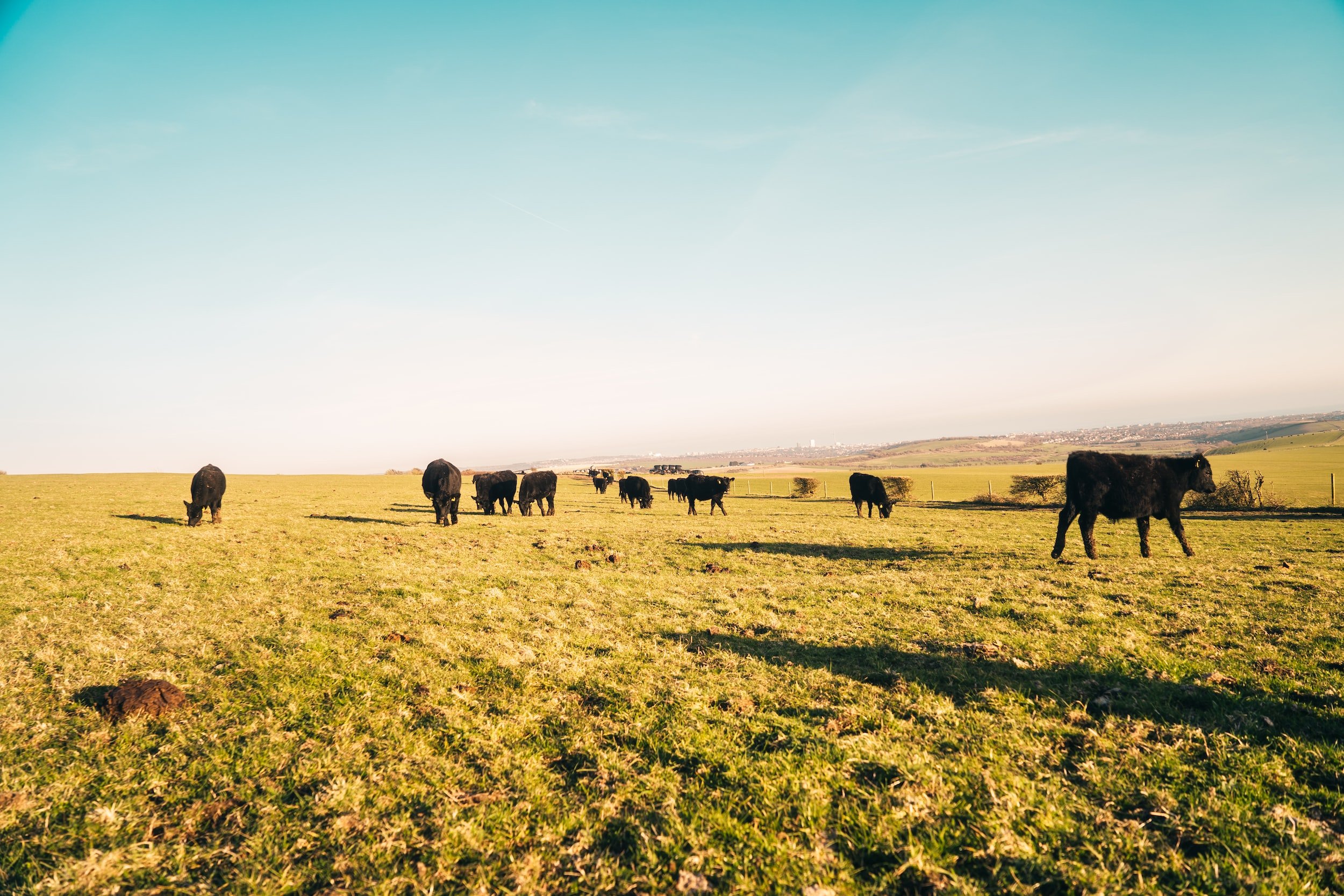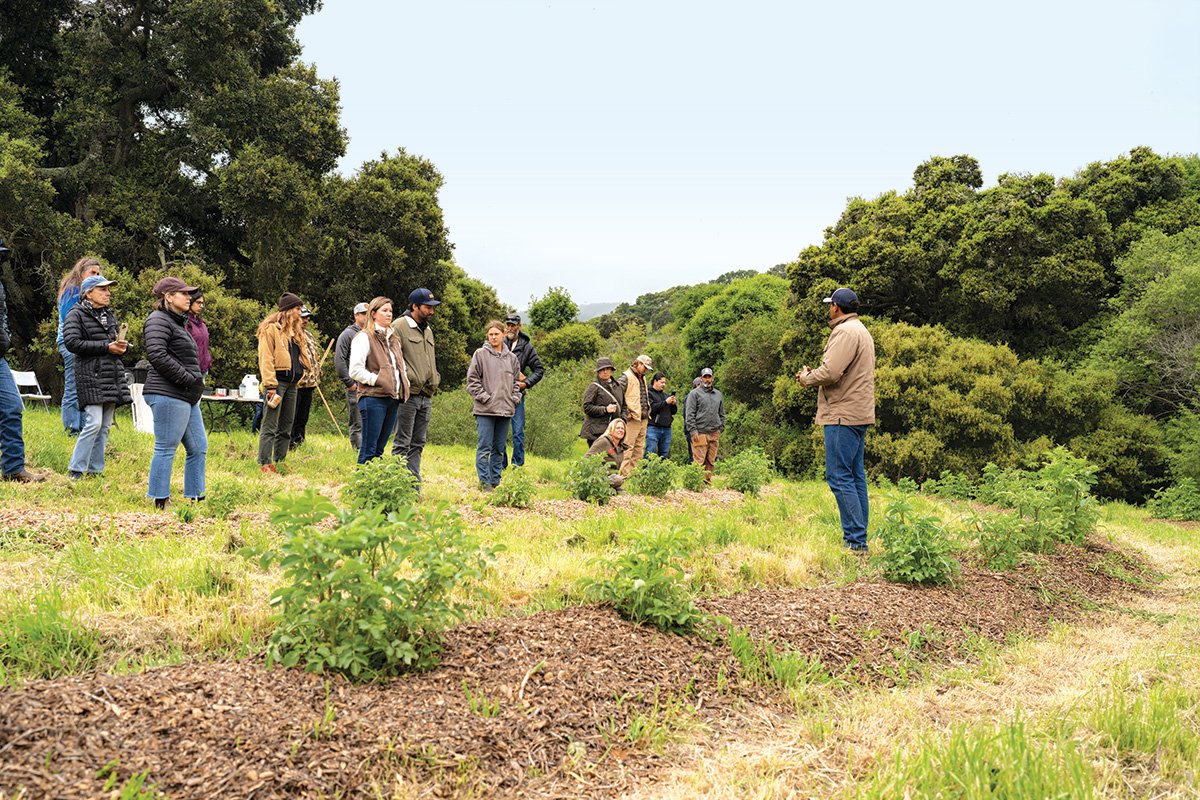
Climate-Smart Agriculture > Prescribed Grazing > Prescribed Grazing Frequently Asked Questions
Prescribed Grazing
Frequently Asked Questions
What is prescribed grazing?
Prescribed grazing is the intentional use of ruminant animals (hoofed herbivores such as cows, sheep, and goats) on the landscape. Unlike conventional grazing, prescribed grazing utilizes a grazing plan that dictates the location and duration of graze periods. This plan is informed by the ecology of the grazing area. For example, rare or sensitive habitats can be avoided or grazed more quickly to enhance the habitat while noxious or harmful weeds can be grazed for longer to eradicate them.
How can prescribed grazing have beneficial ecological impacts?
Rangelands and other grassland ecosystems have evolved – and thrived – over thousands of years with regular disturbances by grazing wild ruminant animals and/or prescribed fires set by Indigenous peoples. Without these naturally well-timed disturbances, native grasses lose their root structure and their leaf tissue oxidizes, lowering their carbon-storing capacity. As native grass health declines, non-native grasses that do not have the same characteristics and ecological benefits as native species move into the area. Prescribed grazing helps to ensure that native plants stay healthy, produce longer roots, and store as much carbon as possible in the soil.
Why is prescribed grazing a preferred method for wildfire mitigation?
Prescribed grazing, prescribed fire, and mechanical thinning are tools that reduce fuel load on the landscape. Prescribed grazing is the most climate-smart option because it can be applied with more precision (to avoid sensitive habitats), has the potential to repair the carbon and water cycles, and emits lower greenhouse gasses.
What is in the prescribed grazing bill that Senator Limón authored?
Senate Bill 675 would make three changes to improve support for prescribed grazing as an eligible wildfire mitigation strategy. First, the bill would update CalFire’s Fire Prevention Grants Program to:
Require CalFire to consult with the Board of Forestry and Fire Protection’s Range Management Advisory Committee (RMAC).
Increase opportunities and outreach for projects that include prescribed grazing.
Remove a sunset provision on advance payments and clarify that prescribed grazing infrastructure is eligible for advanced payments.
Second, the bill updates the Department of Conservation’s Regional Forest and Fire Capacity Program to:
Make the development and implementation of local and regional prescribed grazing plans eligible for funding.
Require the Department to develop guidance for these plans in consultation with the Department of Fish and Wildlife, the Range Management Advisory Committee, and UC Cooperative Extension experts.
Third, the bill would direct the state Wildfire and Forest Resilience Task Force to:
Develop a strategic action plan for expanded use of prescribed grazing.
Expand the scope of their market strategy to include opportunities for food and fiber products from prescribed grazing.
How can I support SB 675?
Become a sheep docent with Channel Islands Restoration.
Add a potential project to the Santa Barbara County Wildfire Resilience Collaborative opportunity matrix – and track the progress of priority resilience projects happening now.
How are Indigenous burning practices and Indigenous leadership more broadly considered in relation to prescribed grazing programs?
Prescribed grazing practices can be, and are, used in conjunction with Indigenous-led burning to achieve additional ecological and cultural goals. There has been an effort to support local Indigenous-led low-intensity burning to reduce wildfire risk and improve habitat. Indigenous people traditionally used low-intensity fire to shape landscapes, ensure the abundance of culturally important plants, create clearings for wildlife, and open understories for access to foraging areas. This skilled and controlled use of low-intensity fire is known as “Good Fire”, differentiating it from the “bad fire” of catastrophic incidents like the Thomas Fire. Good Fire is how we choose to enter into a relationship with fire in a way that seeks to achieve balance.
During 2021-2022, the Santa Ynez Band of Chumash Indians Environmental Office, the CommunityEnvironmental Council, and LegacyWorks Group entered into a partnership to begin exploring what was needed to establish an Indigenous burning program. Read more about the Good Fire Project and key learnings.
How does prescribed grazing protect outdoor workers?
People who work outdoors, such as farm workers, construction workers, and laborers, are especially at-risk when a wildfire breaks out. Unprotected from the elements, they are exposed to wildfire smoke and ash, and are unlikely to be able to stay home from work to take refuge indoors. By preventing and reducing the intensity of wildfires, prescribed grazing offers another layer of protection against these environmental hazards, preventing and reducing the intensity of wildfires. Learn more about the compounding impacts of climate change and socio-economic vulnerabilities on our frontline and essential workers and Indigenous cultures.
Who funds and manages prescribed grazing on public lands or in communities that are predominantly populated by renters, low-income families, and/or multi-unit housing?
The average cost of prescribed grazing can range from $300-$1,200 per acre depending on the size of the area, topography, infrastructure access, and terms of the contract. Targeted grazing is typically used in wildland-urban interface (WUI) zones and is paid for by land owners. When WUI zones are located in areas where targeted grazing is financially out of reach, support from local fire departments, fire safe councils, and other regional planning efforts are crucial for accessing state funding in order to offer those areas the protection they need. SB 675 will help provide this support.
Goats and sheep seem to get the most attention in discussions of prescribed grazing. Can cattle also be used effectively in some cases?
Cattle are considered effective livestock for prescribed grazing projects when utilized in areas with more permanent infrastructure and away from dense population centers or high-traffic areas, such as highways. Cattle, goats, and sheep are only as effective as the people who manage them. No one species is inherently more beneficial or destructive than the other.



